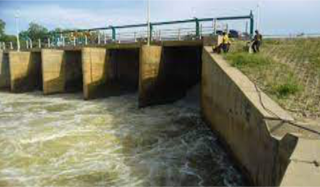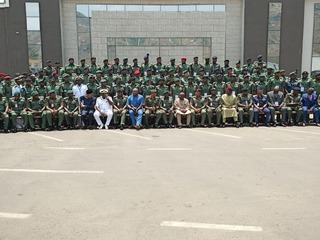Negligence, Delay, and the Looming Danger at Alau Dam in Borno
By: Zagazola Makama
The situation at the Alau Dam near Maiduguri demands urgent scrutiny not just for the structural integrity of the dam itself, but for what it represents: a troubling pattern of negligence, delayed action, and disregard for early warning signs in the face of climate-induced risks.
The visit of the flood committee to Alau dam, today and with the assurance that "the timely release of water from Alau Dam will prevent any flooding" is rooted in sound hydrological logic. Gradual discharge of water indeed reduces the pressure on the dam and prevents overwhelming downstream flooding.
However, such a statement, though optimistic, masks a deeper failure one that lies in the prolonged inaction regarding repairs and maintenance on the dam infrastructure despite visible damage from last year’s floods.
Structural Weakness Ignored
Following the 2024 rainy season, Alau Dam sustained significant structural stress. Maiduguri witnessed real havoc as the entire neighborhoods were submerged, signaling that the real problem wasn’t rainfall intensity alone, it was the inability of the dam and drainage systems to manage strong inflows. The situation exposed not only the fragility of the dam’s structure but the lack of resilience built into its supporting infrastructure.
Since then, it has been common knowledge that the dam requires urgent rehabilitation. Yet, several months into the awarding of contract by the federal government no meaningful repairs have commenced. The assigned contractor, according to community sources, has failed to mobilize to the site in time. This delay can only be interpreted as negligence either on the part of the authorities responsible for oversight, or the contractor’s disregard for the urgency of the task. One source said the contractor just moved to the site recently when the water was already coming.
The Gadabul Threat
There is also the growing concern about Gadabul, an annual flood surge notorious for its destructive impact. Evidence from Damboa and surrounding areas suggests that Gadabul may already be building up. This should serve as a red flag. If the dam remains in a weakened state when the flood surge hits, Maiduguri could face a disaster on a much greater scale than last year.
Lack of Proactive Disaster Preparedness
What makes this situation even more alarming is the apparent lack of proactive planning. A comprehensive emergency response plan involving early repair work, temporary flood barriers, and sensitization of communities downstream seems to be missing or poorly implemented. Relying solely on controlled release of water assumes that the dam’s gates and mechanisms are fully operational and can withstand pressure, a dangerous assumption, especially when those very gates and channels have not been serviced adequately since the last damage.
The cost of further inaction could be catastrophic. If the dam suffers a breach or uncontrolled overflow, the volume of water released will not only devastate low-lying areas of Maiduguri but also severely disrupt livelihoods, destroy farmlands, and exacerbate the region’s already fragile humanitarian situation.
Government agencies, especially those responsible for water resources, emergency management, and public works, must take immediate corrective steps. Community-based flood monitoring should be ramped up, while the contractor must be held accountable for failure to mobilize. In parallel, independent assessments should be conducted to re-evaluate the structural integrity of the dam and surrounding drainage networks.
The signs are too clear to ignore. Last year’s flooding was a warning shot. This year, we are standing on the edge of what could be a far more devastating event, one that is entirely preventable if action is taken now. Delay is no longer an option. The time to act on Alau Dam is not tomorrow, it is now.
Zagazola Makama is a Counter Insurgency Expert and Security Analyst in the Lake Chad Region










